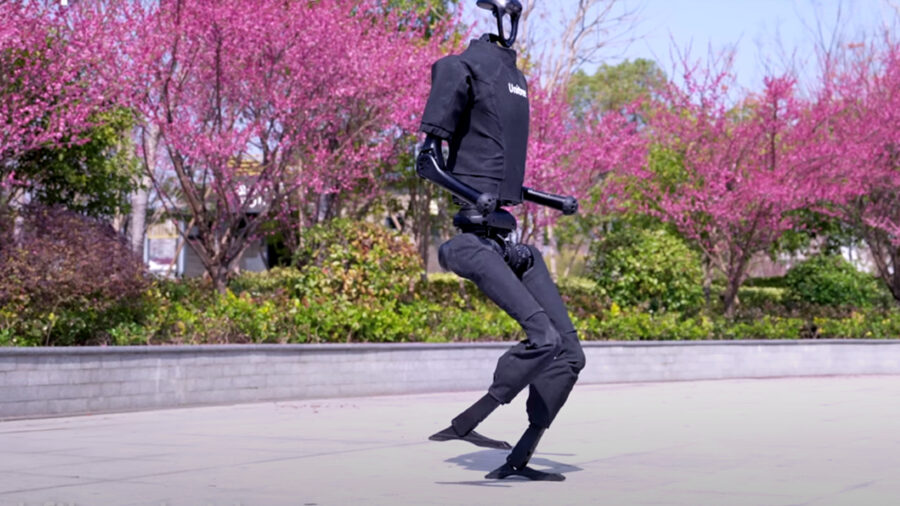Chinese Humanoid Robot Defeats Speed Record, See The Machine In Action

In robotics, achieving the fluidity and agility of human movement has long been a challenge for developers. While the complexities of bipedal locomotion, precision, and speed have remained a hurdle for some developers, Chinese robotic company Unitree has built a robot that has managed to break the speed records held by its mechanical counterparts.
In the video, the robot is seen dancing, navigating stairs, executing jumps, and taking a box from one point to another.
Unitree recently unveiled its H1 humanoid robot in a video showcasing its abilities. Standing at 5 feet 11 inches and weighing approximately 110 pounds, the H1 robot reached an impressive velocity of 3.3 m/s, equivalent to about 7.4 mph. It easily surpassed the previous record holder, Boston Dynamics’ Atlas, which lagged behind at a steady 5.59 mph.
Unitree also claims that the H1 robot has the potential to achieve speeds of up to 11 mph, marking a significant milestone in the development of legged robotics. Founded in Hangzhou, China, in 2017, the company aims to democratize legged robotics by making them as accessible as smartphones and drones. However, the cost may still be too much for the average consumer.
While humans may still hold the upper hand over robots in terms of speed and agility, the relentless innovation driving the robotics industry suggests that the gap is closing rapidly.

The H1 robot’s prowess extends beyond speed. In the video, the robot is seen dancing, navigating stairs, executing jumps, and taking a box from one point to another. Although H1 carries out these movements with a touch less finesse than its human counterparts, it’s still super impressive. What sets the H1 apart from its predecessors is its sophisticated array of sensors.
Housed within its “head” and quipped with a 3D LiDAR and depth camera, the H1 boasts real-time spatial awareness, granting it a 360-degree view of its surroundings. This technology empowers the H1 robot to adapt to various environments with unparalleled precision, paving the way for a new era of robotic mobility and speed.
Despite its achievements, the H1 robot still falls short of matching the pinnacle of human speed. Legendary sprinter Usain Bolt clocked an astounding 27.33 mph during a 100-meter race, a feat that remains unrivaled by robotic contenders. Even the average human sprinting speed far surpasses the H1’s rapid gait.
Unitree recently unveiled its H1 humanoid robot in a video showcasing its abilities. Standing at 5 feet 11 inches and weighing approximately 110 pounds, the H1 robot reached an impressive velocity of 7.4 mph.
However, the creation of bipedal robots like Cassie, developed by Oregon State University’s College of Engineering, demonstrates the steady progress toward bridging the gap between human and robotic capabilities. Cassie, though not a full-fledged humanoid robot like the H1 or Atlas, achieved a speed of 9 mph during its 100-meter dash.
While humans may still hold the upper hand over robots in terms of speed and agility, the relentless innovation driving the robotics industry suggests that the gap is closing rapidly. As Unitree’s H1 continues to push the boundaries of what is possible, it becomes increasingly evident that the era of humanoid robots is quickly moving forward.
But while robots like the H1 humanoid and Cassie could excel in certain areas due to their design and lightweight build, the adaptability of the human body, regenerative capabilities of tissues, and the complex sensory-motor functions of the nervous system will give humans an edge over robots in terms of overall speed and versatility for a long time.
Source: Popular Mechanics












